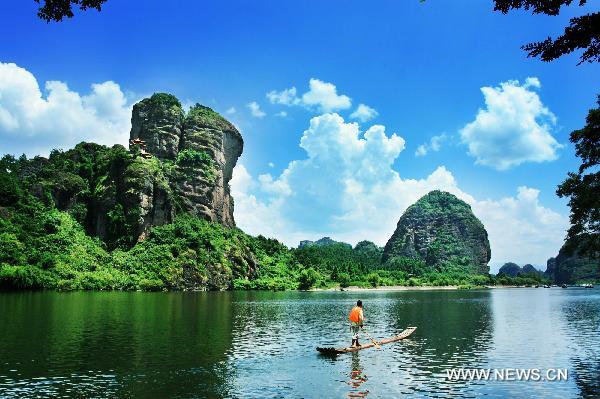The Center of Heaven and Earth
|
|
|
File photo shows scenery of Mountain Longhushan in east China's Jiangxi Province. The World Heritage Committee decided to include China Danxia Landform in the World Heritage List at its 34th meeting being held in Brasilia, capital of Brazil, on Aug. 1, 2010. The six Danxia landform areas are: Mountain Langshan (Hunan Province), Mountain Danxiashan (Guangdong Province), Taining (Fujian Province), Mountain Longhushan and Guifeng (Jiangxi Province), Chishui (Guizhou Province), Mountain Jianglangshan (Zhejiang Province). [Xinhua Photo] |
"For the monks, living in a world-recognized heritage site is a wonderful experience, but at the same time, our responsibility to protect the temple becomes even graver." he said.
Shi also promised ticket prices for Shaolin temple will remain the same, adding that a higher profile of the Shaolin Temple will heighten the public's awareness to better protect the site.
"It will also make Chinese culture better understood by the world." Shi said.
China has listed 39 world heritage sites, including 28 cultural heritage sites, seven natural heritage sites and four cultural and natural heritage sites.
A total of 32 new properties were submitted to the World Heritage List this year: six natural, 24 cultural and two mixed (both natural and cultural), including four transnational nominations.
Also in the running for a UNESCO heritage listing is the Danxia Landform, a collection of six mountain areas in southern China.
Danxia, literally means "red cloud" in Chinese, refers to the red colored sandstone that characterize the many steep cliffs of the landform's mountains. Formed in the Mesozoic Era (about 240 to 138 million BC), Danxia is also home to rare dinosaur and plant fossils.
The Danxia Landform mountain areas nominated include Langshan and Wanfoshan (Hunan Province), Danxiashan (Guangdong Province), Taining and Guanzhoushan (Fujian Province), Long-hushan and Guifeng (Jiangxi Province), Fangyan and Jianglangshan (Zhejiang Province).
 0
0 








Go to Forum >>0 Comments